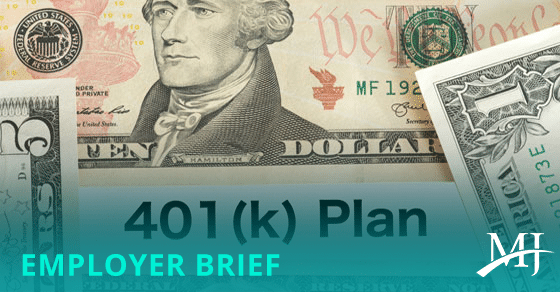The current standard for approving 401(k) hardship distributions
Employers that offer a 401(k) plan should generally encourage participants to invest as much as they can and not touch the money until retirement. However, there may be instances when employees feel they need to access their plan funds before reaching retirement age.
In some of those cases, participants may qualify for a 401(k) hardship distribution. These differ from plan loans in that hardship distributions don’t need to be repaid — though they’re still subject to income taxes and a 10% penalty if under the age of 59½. Plan administrators must approve a hardship distribution under the current standard.
The previous standard
Generally, for distributions made before 2020, plans could use either of two standards for determining whether a hardship distribution was necessary: a safe-harbor standard or a non–safe-harbor standard. The safe-harbor standard:
- Required a participant to first obtain all currently available distributions and plan loans, and
- Prohibited elective deferrals and after-tax contributions to plans maintained by the plan sponsor for at least six months after the hardship distribution.
The non–safe-harbor standard was nominally a determination based on all relevant facts and circumstances. However, IRS regulations allowed an employer to rely on a participant’s representation that the emergency financial need couldn’t reasonably be met by certain specified means — such as liquidation of assets, loans and other plan distributions. Approval was also contingent on the plan sponsor having no contrary knowledge of the participant’s ability to pay.
The current rules
For distributions made on or after January 1, 2020, there’s only one relatively simple standard. It imposes two requirements to establish that a distribution is necessary:
- Employees must obtain any other currently available distributions under the plan and any other deferred-compensation plan, whether qualified or nonqualified, maintained by the employer, including dividends from an employee stock ownership plan, and
- Employees must represent in writing, which includes electronic mediums and other IRS-approved formats, that they have insufficient cash or other liquid assets reasonably available to satisfy the financial need.
Cash and other liquid assets aren’t “reasonably available” if they’re earmarked for payment of another obligation in the near future, such as rent or a mortgage. A plan administrator can’t accept an employee’s representation if the administrator has actual knowledge contrary to the representation.
Additional conditions
A 401(k) plan can impose only the minimum conditions described above or it can impose additional conditions if, for example, the plan sponsor is particularly concerned about preserving accounts solely for retirement. Additional conditions could include requiring that employees first take all nontaxable loans available under the employer’s plans.
For distributions made on or after January 1, 2020, however, additional conditions can’t include a required suspension of elective contributions or employee after-tax contributions under the rules for qualified plans — which include 401(k)s — and certain other retirement plans.
Administrative challenges
There’s no doubt that 401(k) plans are a valuable employee benefit that can help attract and retain employees. However, one of their challenges is managing the administrative requirements, including the current standard for hardship distributions. Contact us for help understanding all the tax and information-reporting rules applicable to retirement benefits.
© 2023




